There are different types of cycling shoes for different types of riding. A couple of things they all have in common is that they have stiffer soles than normal footwear and they have mountings for pedal cleats.
Cycling shoes are different from other shoes. Cycling in regular shoes or trainers is not a good idea. Uncomfortable and slippery. Cycling shoes are designed for the task and are more comfortable, more powerful, safer and just generally loads better.
If you’re cycling for more than a couple of miles you’ll benefit from getting a pair of cycling shoes.
There are different types of cycling shoes for different types of riding. A couple of things they all have in common is that they have stiffer soles than normal footwear and they have mountings for pedal cleats.
First of all, let’s discuss clipless pedals. Using pedals that you clip into are one of the first significant items that you buy when you decide/realise that you’re taking this cycling lark moderately seriously.
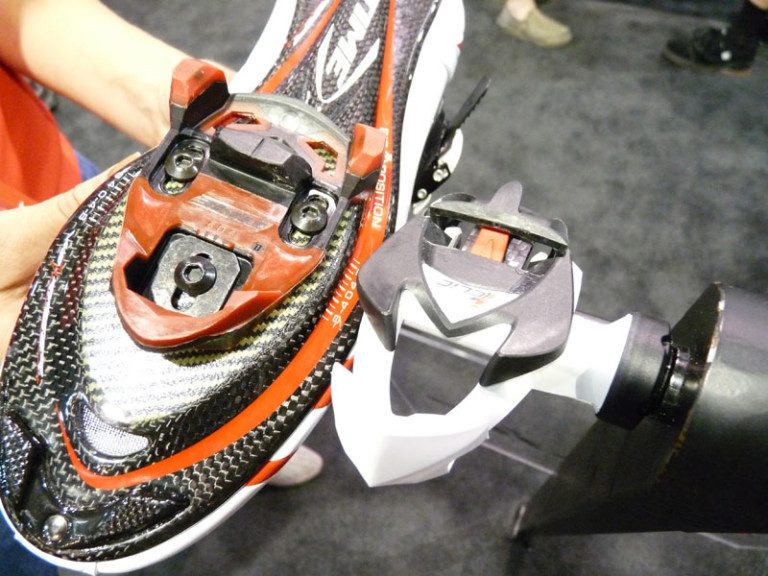
Why use clipless pedals? They make cycling faster and easier. When you’re clipped-in, more of your power gets transferred into forward motion. You also feel more at one with your bike so general bike handling improves too.
Basically, you should try clipless pedals. You can learn more about clipless pedals in general from our recent Buyers Guide to Road Pedals.
Cycling shoes come in two main categories: road and mountain bike.
Road
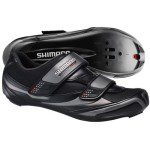 Road cycling shoes are minimalist. They have little or no tread on the sole. The pedal cleat stands proud of this featureless sole. They’re very much based around pedalling, not walking.
Road cycling shoes are minimalist. They have little or no tread on the sole. The pedal cleat stands proud of this featureless sole. They’re very much based around pedalling, not walking.
The uppers are similarly on the sleek and thin side of things too. This makes them much easier for pulling-on overshoes too for riding in colder weather.
Speaking of cold weather, most road shoes are regular below-ankle types but you can also get high-top road ‘boots’ for riding in really wintery conditions.
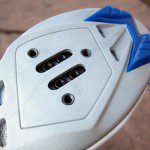 Road shoes usually have no laces. There are a handful of high-end new lace-up shoes that are in vogue but they’re of limited appeal to most riders. Road shoes prefer to use Velcro straps, buckles or nylon string ‘BOA’ systems – or sometimes a combination of these.
Road shoes usually have no laces. There are a handful of high-end new lace-up shoes that are in vogue but they’re of limited appeal to most riders. Road shoes prefer to use Velcro straps, buckles or nylon string ‘BOA’ systems – or sometimes a combination of these.
Some high end road shoes also have externally adjustable heel cups for fine-tuning a really secure but also extremely comfortable shoe fitment.
The soles are as stiff as they can be – for pedal power. The soles are as thin as they can be – for weight and (to a degree) for bike handling. Some pretty fancy material are used in the construction of road shoes, carbon fibre being the most well known.
The soles have holes in them for attaching clipless pedal cleats to. The most common hole array is 3-holes (often now combined with a 2-hole array too). Oddball Speedplay cleats use a 4-hole array and you can find shoes with 4-hole soles if need be.
Mountain bike
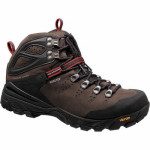 Mountain bike shoes can be seen as a blend of road shoes and outdoor/walking shoes. Shoes at the racier end of the spectrum are more ‘road’ than ‘walking shoe’, shoes at the more casual end of things are more ‘walking shoe’ than ‘road’.
Mountain bike shoes can be seen as a blend of road shoes and outdoor/walking shoes. Shoes at the racier end of the spectrum are more ‘road’ than ‘walking shoe’, shoes at the more casual end of things are more ‘walking shoe’ than ‘road’.
Mountain bike shoes are not as super stiff as road shoes and they’re generally a bit chunkier – particularly on the sole. The stiffness levels of mountain bike shoes vary depending on the design discipline; race shoes are stiffer than casual shoes.
The soles of mountain bike shoes are rugged and lugged for grip in the dirt. The lugs are made of rubber (rather than plastic) so that they grip on wet rock too.
The uppers vary in chunkiness and height. XC racers use sleek below-ankle shoes, all-year hiker-bikers often prefer high-top boots with hefty soles. The uppers offer varying degrees of bump protection too, from minimalist toe bumpers through to shielded heel cups.
Some mountain bikes shoes are suited to hot weather, some are suited to cold weather. Generally you can tell what sort of conditions a mountain bike shoe is designed for by looking at the ventilation (or lack of) that a shoe has. More holes, more mesh = summer shoe. Fully encompassed = winter shoe.
Overshoes aren’t a common sight in mountain biking, they get too easily damaged, so it’s not unusual for a mountain biker to have a couple of different pairs of riding shoes – a good weather pair and a bad weather pair.
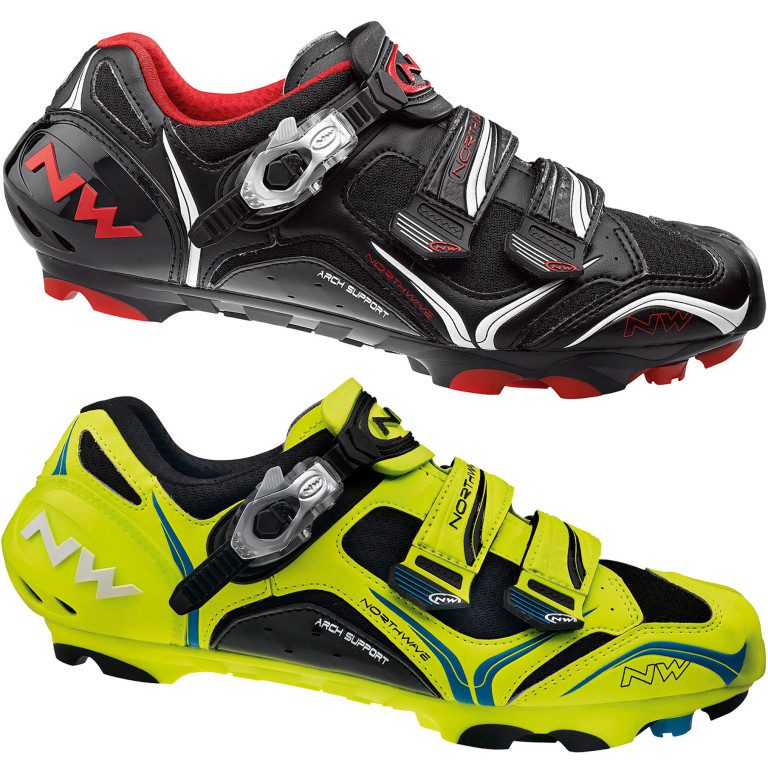
The lacing systems usually don’t involve traditional laces. Velcro straps are the most common option. Ratchets and BOA systems are available but they aren’t quite so common as they are on road shoes – partly through concerns of how such systems would hold up to getting covered in muck.
The cleat mounting options on mountain bike shoes are thankfully very straightforward. There’s only one style – 2-bolt. The cleat sits in a recess surrounded and protected by the sole of the shoe’s tread. This makes mountain bike shoes no problem to walk around in.
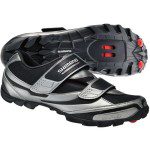
Which cycling shoes should you buy?
Regular riders should go for a practical shoe. Go for a shoe with a decently stiff sole and an up-to-date method of tightening up the shoe (a rachet-ed top strap etc) but one that isn’t too stiff to do a bit of walking about in.
Racers should go for the stiffness and most accurately adjustable shoe that they can afford. Carbon soles, ratchets and BOAs, minimalist sole, light weight. Unfortunately they’ll be expensive but racers will appreciate the advantage.
Leisure riders (or commuters and tourers) should go for comfort over pretty much everything else. Entry level shoes will be all that you need. You may wish to choose shoes that don’t look too wacky or techno, so that you don’t feel self-conscious when out mixing with non-cyclists.

HI THERE, just looking at your “Buyers Guide to Cycling Shoes”. Was hoping for a bit information about size and width fittings
Hi, If you click on the “sizing information” tab on the individual shoe listings you should find the info you need. Alternatively you can email the guys in customer services on sales@merlincycles.com or 01772 432431 for a more in depth chat. Thanks